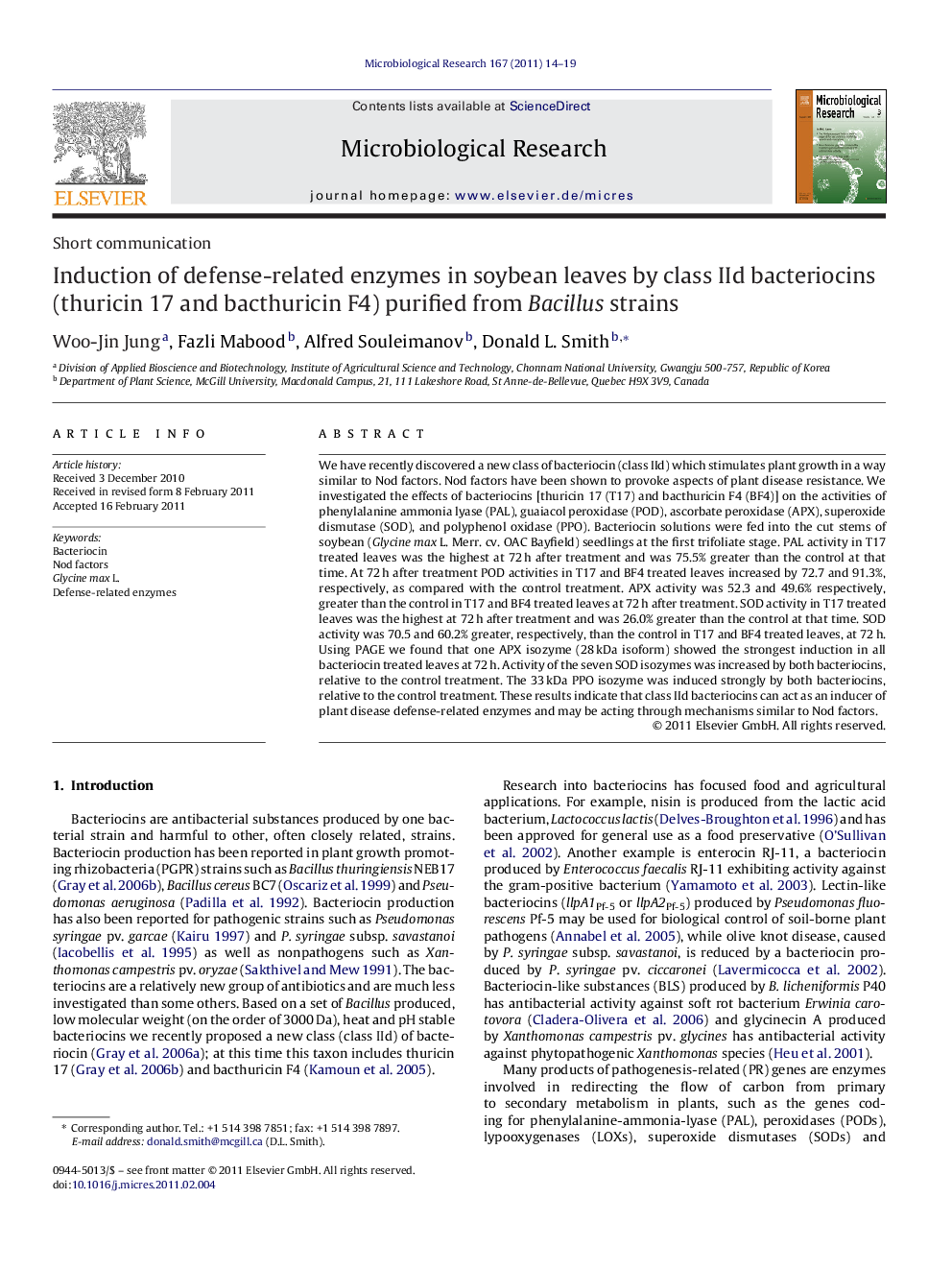| Article ID | Journal | Published Year | Pages | File Type |
|---|---|---|---|---|
| 2092631 | Microbiological Research | 2011 | 6 Pages |
We have recently discovered a new class of bacteriocin (class IId) which stimulates plant growth in a way similar to Nod factors. Nod factors have been shown to provoke aspects of plant disease resistance. We investigated the effects of bacteriocins [thuricin 17 (T17) and bacthuricin F4 (BF4)] on the activities of phenylalanine ammonia lyase (PAL), guaiacol peroxidase (POD), ascorbate peroxidase (APX), superoxide dismutase (SOD), and polyphenol oxidase (PPO). Bacteriocin solutions were fed into the cut stems of soybean (Glycine max L. Merr. cv. OAC Bayfield) seedlings at the first trifoliate stage. PAL activity in T17 treated leaves was the highest at 72 h after treatment and was 75.5% greater than the control at that time. At 72 h after treatment POD activities in T17 and BF4 treated leaves increased by 72.7 and 91.3%, respectively, as compared with the control treatment. APX activity was 52.3 and 49.6% respectively, greater than the control in T17 and BF4 treated leaves at 72 h after treatment. SOD activity in T17 treated leaves was the highest at 72 h after treatment and was 26.0% greater than the control at that time. SOD activity was 70.5 and 60.2% greater, respectively, than the control in T17 and BF4 treated leaves, at 72 h. Using PAGE we found that one APX isozyme (28 kDa isoform) showed the strongest induction in all bacteriocin treated leaves at 72 h. Activity of the seven SOD isozymes was increased by both bacteriocins, relative to the control treatment. The 33 kDa PPO isozyme was induced strongly by both bacteriocins, relative to the control treatment. These results indicate that class IId bacteriocins can act as an inducer of plant disease defense-related enzymes and may be acting through mechanisms similar to Nod factors.
